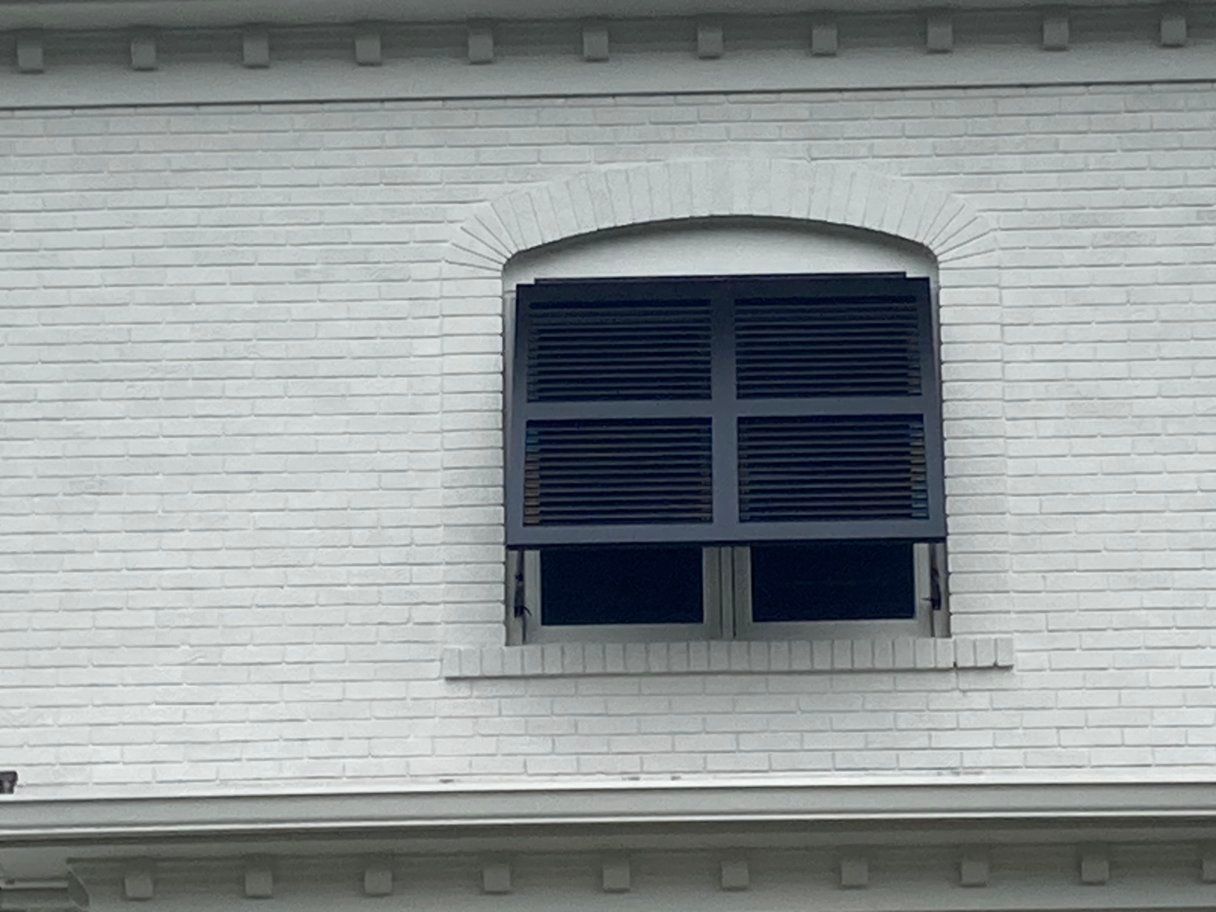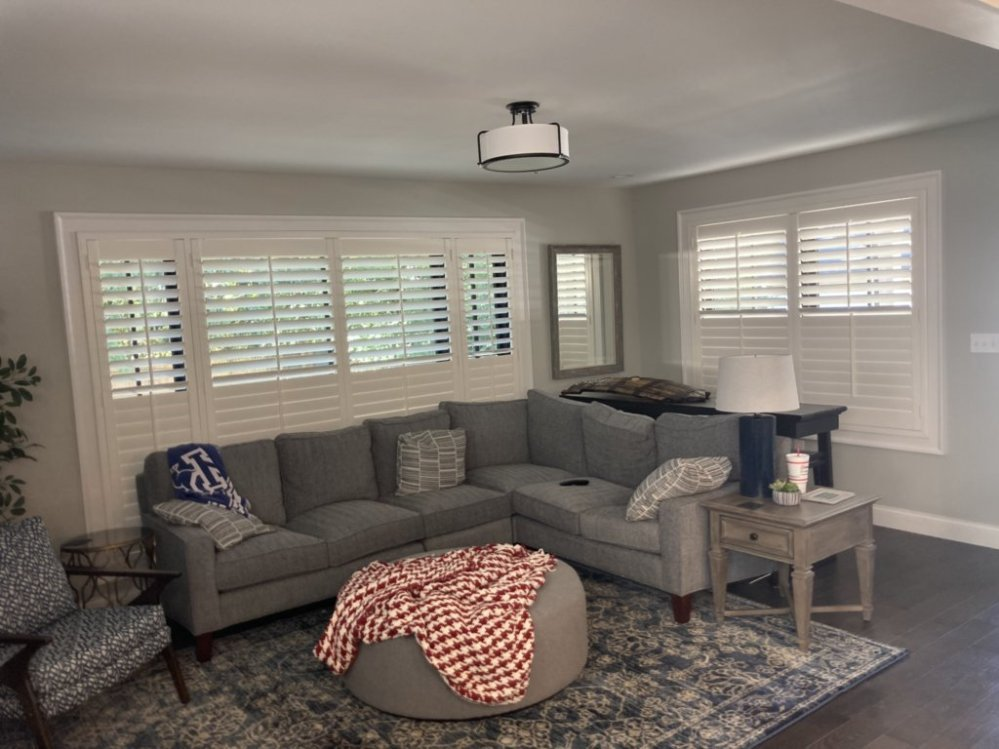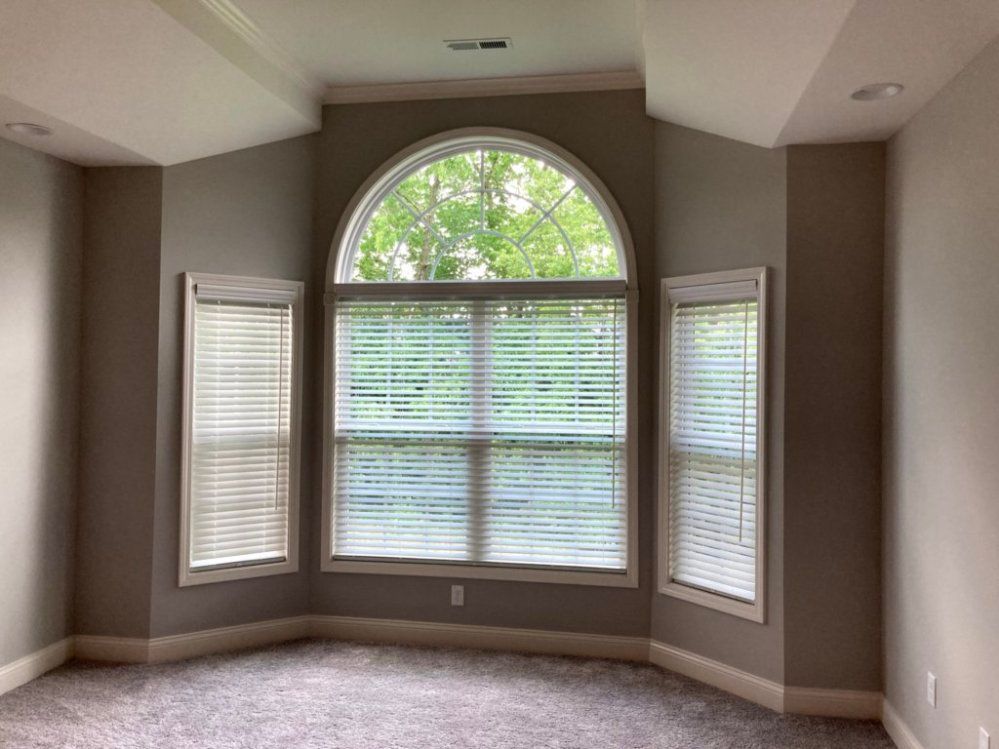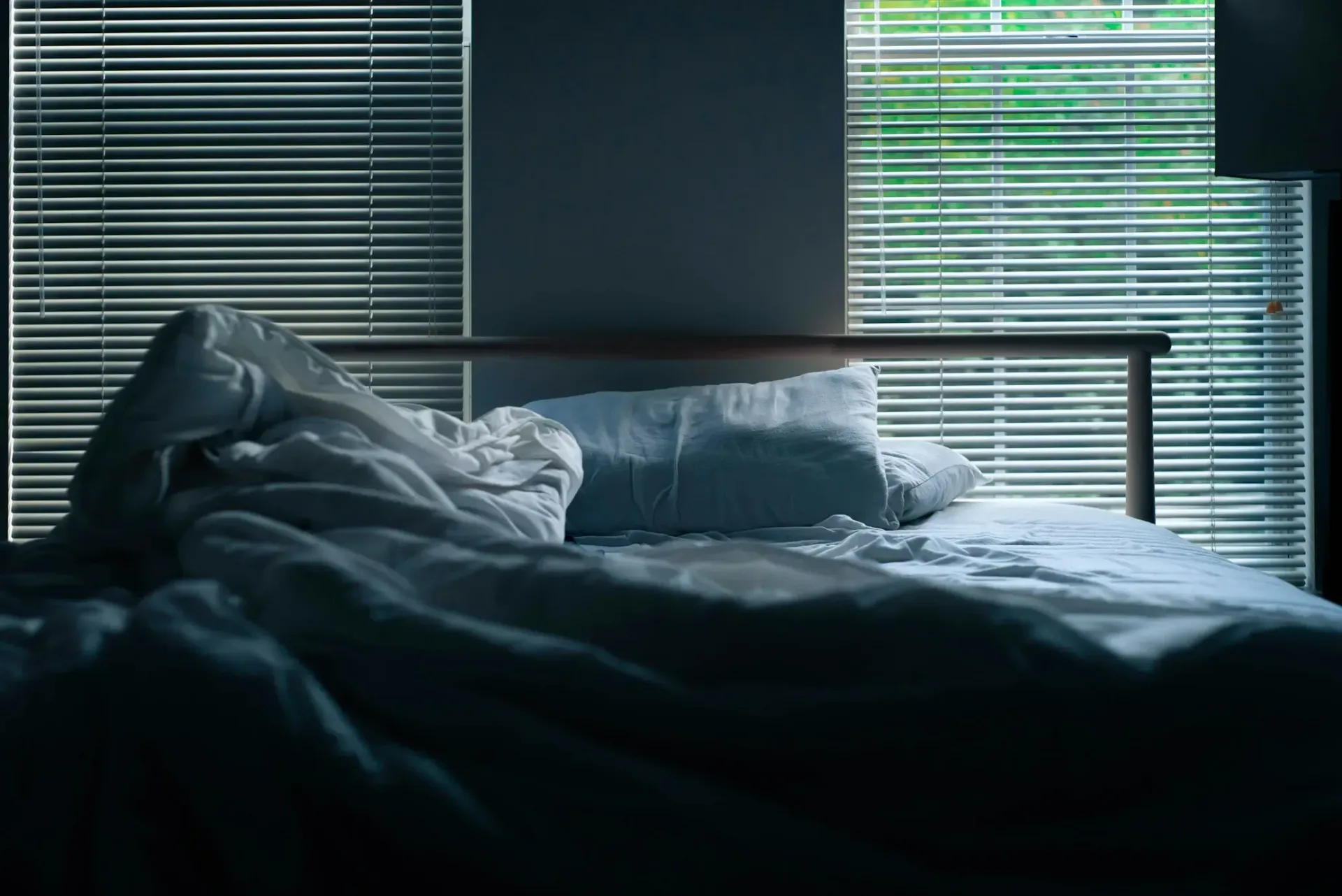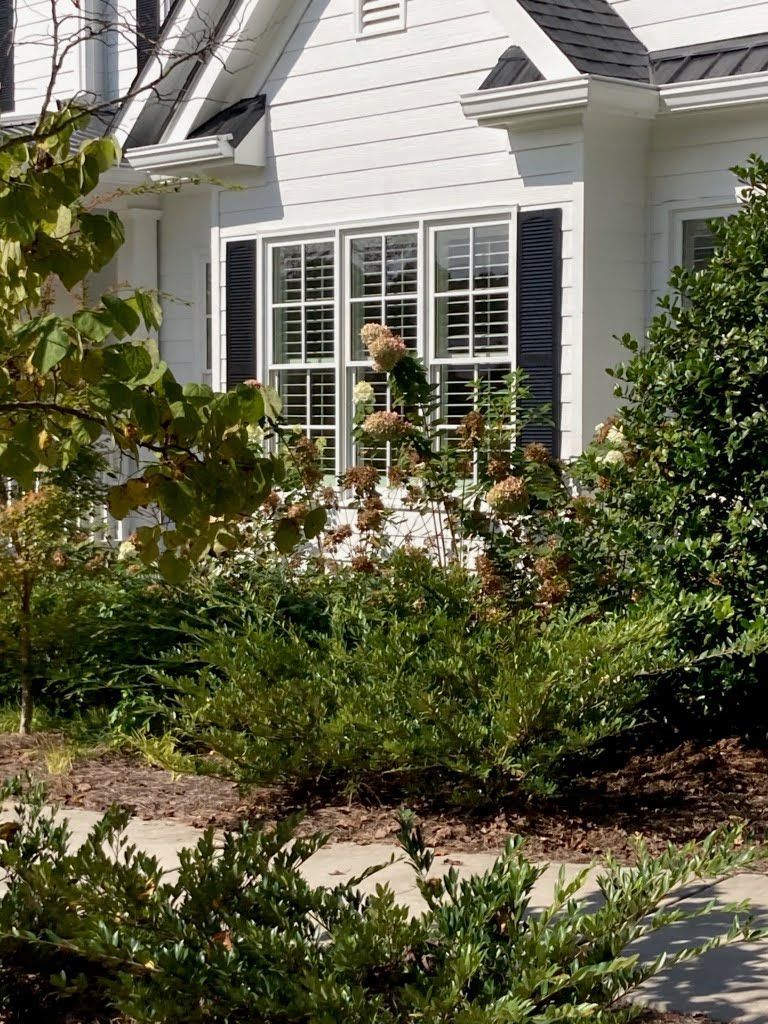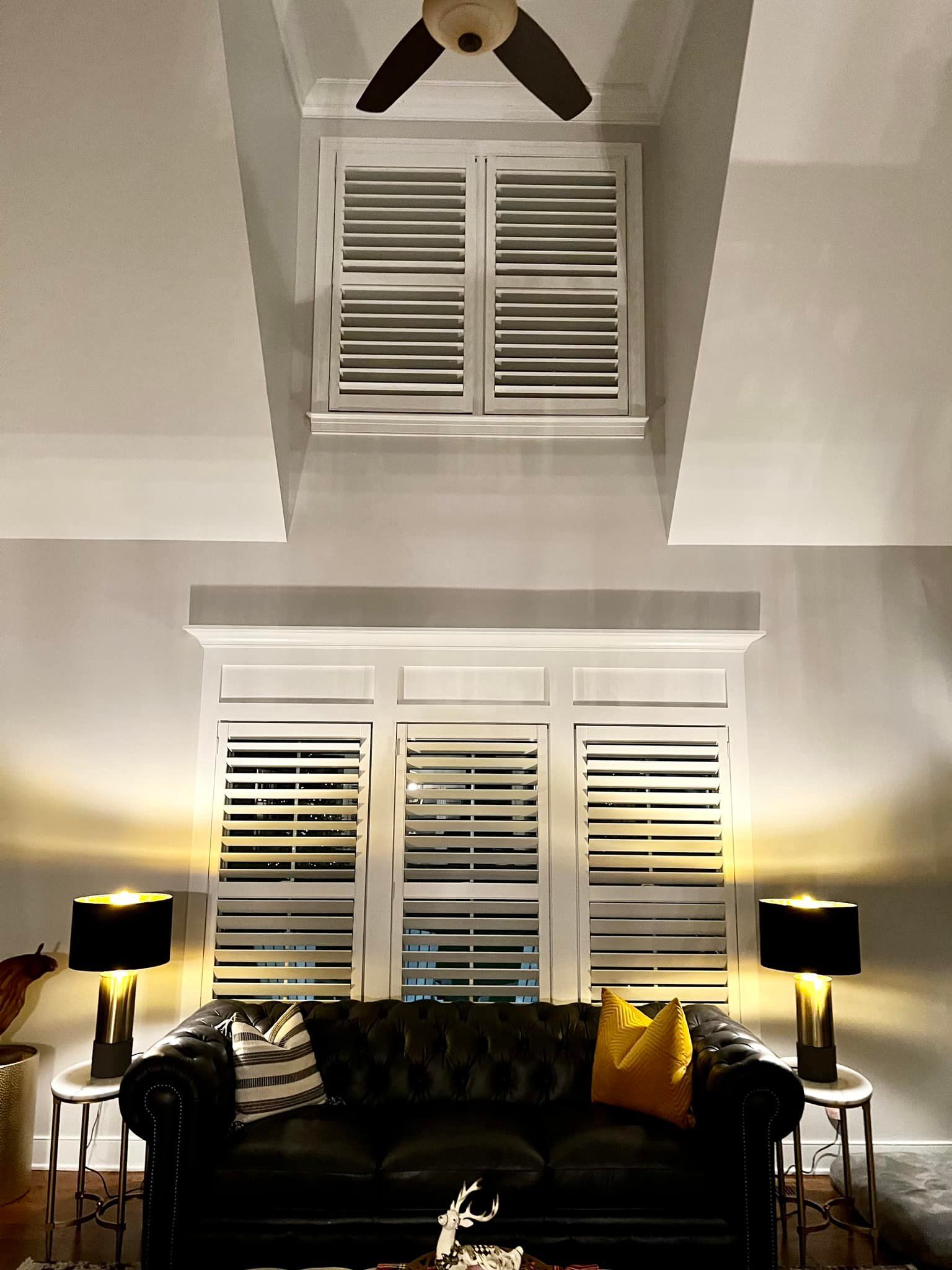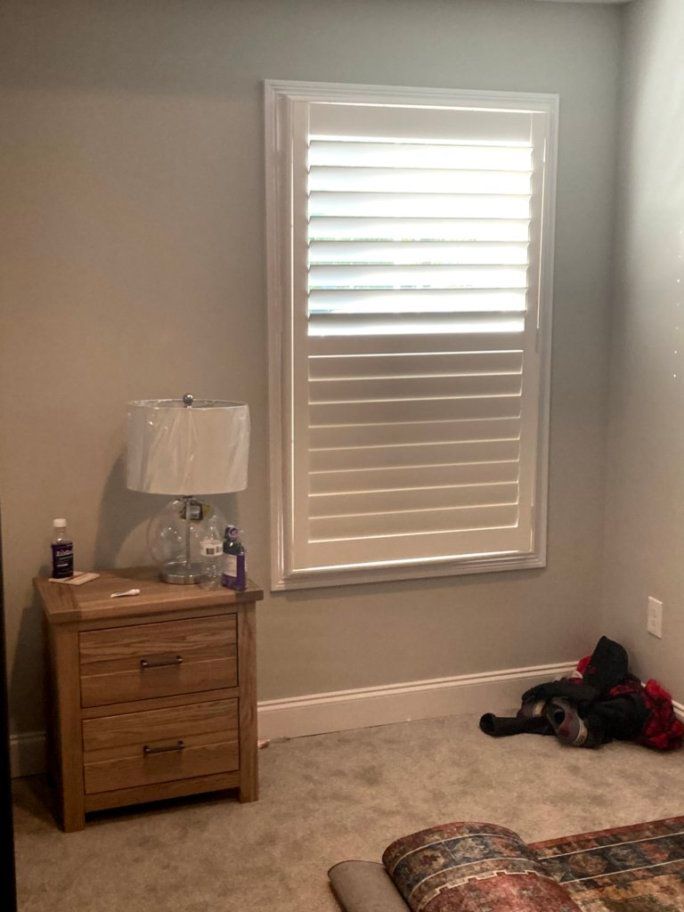Plantation Shutters Material Options
Plantation shutters are a stylish choice for many homeowners. They offer control over light and privacy while enhancing room aesthetics. Their sleek lines and adjustable louvers are highly appealing.
Choosing the right material can be challenging. Should you go with wood for its classic charm? Is faux wood better for its affordability? What about vinyl for low maintenance? This blog breaks down the pros and cons of each, focusing on durability, maintenance, and cost.
By the end of this guide, you'll have a clear idea of which material suits your needs best.
Wood Plantation Shutters
Wood plantation shutters exude classic elegance. Their natural grain and texture add warmth to any room, whether traditional or modern. One of the key advantages of wood shutters is their customization options. You can stain or paint them in various shades to match your home's color scheme. They're also sturdy, offering durability that lasts for years if properly maintained.
On the downside, wood shutters come with a higher price tag. Not only are they more expensive upfront, but they also require regular maintenance to keep them looking their best. This maintenance includes cleaning and polishing to preserve the wood's shine and prevent wear. Additionally, wood shutters are sensitive to humidity and temperature changes, which can lead to warping or cracking over time. This makes them less suitable for areas like bathrooms or kitchens, where moisture levels can be high.
Despite these cons, wood plantation shutters remain a popular choice for those who value aesthetics and are willing to invest in their upkeep. The classic look they provide can be worth the extra effort and cost.
Faux Wood Plantation Shutters
Faux wood plantation shutters bridge the gap between affordability and the aesthetic of real wood. Made from composite or PVC, these shutters are designed to mimic the look of genuine wood while offering added durability. They are a popular choice for homeowners who want the appearance of wood without its downsides.
Faux wood shutters are budget-friendly, typically costing less than real wood. This makes them a great choice if you're looking to cover multiple windows without breaking the bank. They are also resistant to moisture and warping. Unlike wood, they don't swell, crack, or bend in high-humidity environments. This makes them ideal for areas like bathrooms and kitchens.
Maintenance is another strong point. Faux wood shutters require little upkeep. You don't need to polish them or apply special treatments. A quick wipe with a damp cloth is usually enough to keep them clean. This low-maintenance aspect adds to their appeal.
However, faux wood has its drawbacks. The look isn't quite as authentic as real wood, which can be noticeable on close inspection. This might be a deal-breaker for some, especially those who value a more natural aesthetic. Additionally, faux wood shutters offer limited customization. They typically come in a smaller range of colors and finishes, unlike real wood, which can be stained or painted to match your decor.
Despite these cons, faux wood plantation shutters remain a practical and durable option for many. They provide the wood-like appearance you want without the extensive maintenance. If you're looking for a cost-effective solution that's resistant to moisture, faux wood could be the perfect choice.
Vinyl Plantation Shutters
Vinyl plantation shutters are a popular choice for those seeking a lightweight and cost-effective solution. Made from durable plastic, they offer many advantages for various settings, especially where moisture is a concern. Let's explore the pros and cons of vinyl shutters.
Vinyl shutters are often the most affordable option. This makes them a great choice if you're on a budget or need shutters for multiple rooms. They are lightweight, which makes them easy to install and operate. This can be a big advantage for DIY projects or when you need to open and close shutters frequently.
One of the biggest benefits of vinyl shutters is their resistance to moisture. Unlike wood, vinyl doesn't warp, crack, or swell when exposed to humidity. This makes them ideal for bathrooms, kitchens, or laundry rooms, where moisture levels are often high. Vinyl shutters require minimal maintenance, too. A simple wipe with a damp cloth is usually enough to keep them clean.
However, vinyl shutters have some downsides. They lack the aesthetic appeal of wood or faux wood, which can be noticeable in more traditional or high-end settings. They also aren't as durable as other materials, which means they might not last as long with heavy use.
Another drawback is the limited design options. Vinyl shutters typically come in a smaller range of colors and styles, which can restrict your ability to customize them to match your home's decor. They may also be more prone to yellowing or discoloration over time, especially if exposed to direct sunlight.
Despite these cons, vinyl plantation shutters are a practical choice for many homeowners. They offer affordability, ease of maintenance, and excellent resistance to moisture. If you're looking for shutters that are simple, budget-friendly, and work well in humid environments, vinyl could be the best option for you.
Factors to Consider When Choosing Material
When choosing material for plantation shutters, several key factors come into play. Durability is crucial. Wood shutters are sturdy but can warp in humid conditions. Faux wood is more resistant to moisture, while vinyl is the most moisture-resistant. Maintenance also matters. Wood requires regular upkeep. Faux wood needs less, and vinyl needs almost none.
Cost is another important factor. Wood shutters are the most expensive. Faux wood is more affordable, and vinyl is the cheapest. Consider your budget when deciding. Aesthetics matter, too. Wood offers a classic look. Faux wood tries to mimic it, and vinyl has a simpler appearance.
Environmental impact is also a consideration. Wood has a higher environmental footprint due to tree harvesting. Faux wood and vinyl are made from synthetic materials, but vinyl can be recycled. Think about your sustainability goals.
Choose the material based on your priorities. If you value durability and don't mind maintenance, wood could be right. If you want low maintenance and moisture resistance, consider faux wood or vinyl. Ultimately, the best choice depends on your budget, maintenance preference, and aesthetic needs.
Conclusion
Choosing the right material for plantation shutters involves balancing several factors. Wood offers a timeless look and can last for years with proper care, but it requires more maintenance and is sensitive to humidity. Faux wood provides a wood-like appearance without the risk of warping, making it ideal for humid areas. It's also more affordable than wood. Vinyl shutters are the most budget-friendly and low-maintenance option, but they lack the aesthetic appeal of wood and have fewer customization options.
Think about your needs and priorities. If you prefer the classic look of wood and don't mind the maintenance, go for it. If you want something that's easier to care for and more resistant to moisture, faux wood is a good choice. For those who want the most affordable and low-maintenance solution, vinyl might be the best option.
Consider where you'll be installing the shutters and what your budget is. Also, factor in how much time you're willing to spend on maintenance. Each material has its pros and cons, so weigh them carefully to make the best choice for your home.
If you're in Lexington, Louisville, Cincinnati, Richmond, or Georgetown, look no further than Commonwealth Shutters and Blinds. We specialize in plantation shutters, exterior shutters, faux wood & wood blinds, and more. Contact us today for a free consultation and transform your windows with our quality treatments.
Frequently Asked Questions
Can plantation shutters increase the value of my home?
Yes, they can. Plantation shutters add to a home's aesthetic appeal and functionality, which can be attractive to potential buyers.
How often should I maintain wood plantation shutters?
Wood shutters need regular cleaning and occasional polishing to keep them in top condition. Aim for at least once a month, depending on your environment.
Is it possible to paint or stain faux wood shutters?
Generally, faux wood shutters are not designed for repainting or staining. Check with the manufacturer to be sure.
Can vinyl shutters be used in outdoor settings?
Vinyl shutters can withstand moisture, but they're not designed for outdoor use. Exposure to sunlight and weather can cause them to degrade or discolor.
Are there color and design limitations with vinyl shutters?
Yes, vinyl shutters offer fewer customization options. They come in a limited range of colors and styles compared to wood or faux wood shutters.

